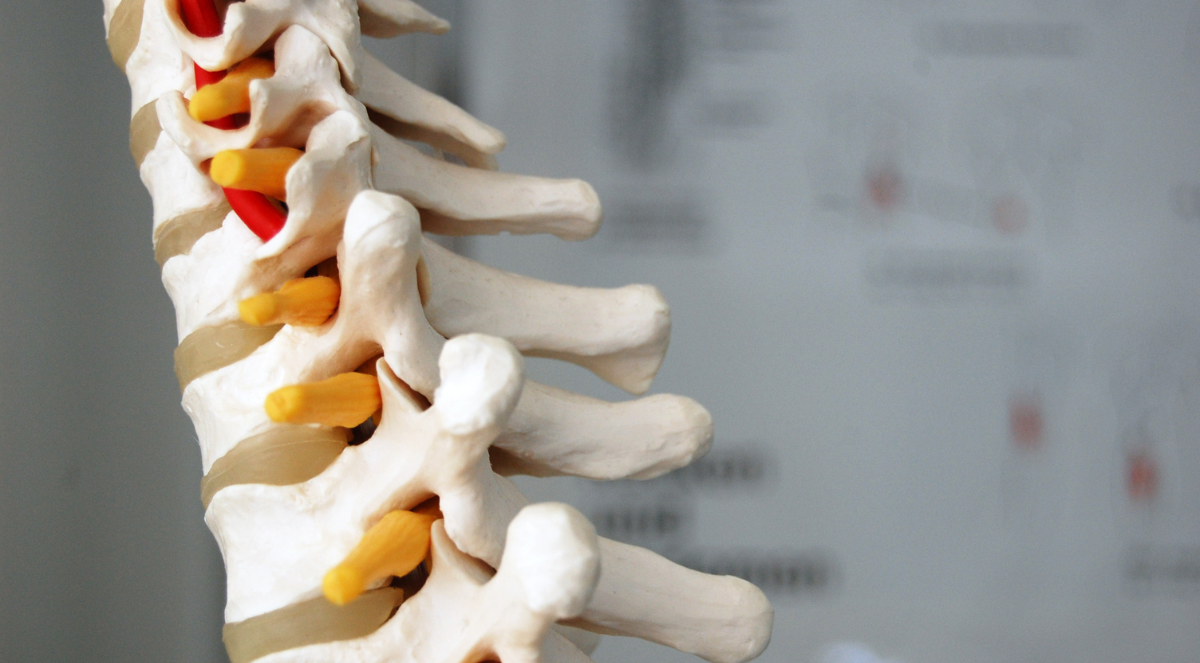Herniated disk surgery is a common treatment option for people with severe back pain and nerve problems. Many patients want to know how successful this surgery is before deciding to undergo the procedure. The success rate for herniated disk surgery generally ranges from 75% to 80%, meaning most patients experience significant relief from pain and improved function after the operation.
Different surgical methods exist, and success can depend on the type of surgery, the patient’s condition, and how soon the surgery is performed after symptoms begin. While surgery offers good chances of recovery, it’s important to understand the risks and the recovery process involved. Choosing the right treatment often involves weighing these factors carefully.
Knowing what to expect helps patients make informed decisions and set realistic goals for recovery. This article will explore the success rates, types of surgery, and what life looks like after the operation to provide a clear picture of what herniated disk surgery entails.
Key Takeaways
- Most patients see pain relief and better function after herniated disk surgery.
- Success depends on the surgery type and patient’s condition.
- Understanding risks and recovery is key to informed decisions.
Understanding Herniated Discs and Treatment Options
A herniated disc happens when the soft inner material of a spinal disc pushes through its outer layer. This can cause pain and nerve problems. Treatment ranges from non-surgical care to surgery, depending on symptoms and severity. The goal is to relieve pain, improve function, and prevent nerve damage.
What Is a Herniated Disc?
A herniated disc involves a tear in the outer ring of a spinal disc, allowing the inner gel-like substance to leak out. This usually occurs in the lumbar spine but can affect the neck. The vertebrae and spinal discs protect the spinal cord and spinal nerves.
As discs age or due to injury, they can weaken, a condition known as degenerative disc disease. This makes herniation more likely. The leaking material can press on spinal nerves, causing pain or numbness in the back, neck, or legs.
Common Symptoms and Risks
Symptoms of a herniated disc vary by location and severity. Back pain and neck pain are common. When the lumbar spine is affected, leg pain or sciatica often occurs due to nerve compression.
Other symptoms can include weakness, numbness, or tingling in the arms or legs. In severe cases, patients may have trouble moving or lose bladder control. Smoking, obesity, and repetitive strain increase the risk. Early diagnosis is important to avoid permanent nerve damage.
Conservative and Non-Surgical Approaches
Most patients start with non-surgical treatment to manage pain and inflammation. This includes physical therapy, medications like NSAIDs, and sometimes steroid injections.
A physical therapist guides patients through exercises to strengthen back muscles and improve flexibility. Rest and avoiding heavy lifting are also recommended. Many recover well with these conservative treatments over weeks to months.
These approaches focus on reducing symptoms and improving mobility without risks related to surgery. Regular follow-up helps track progress and adjust care.
When Is Surgery Recommended?
Surgery is considered when non-surgical treatment fails or symptoms worsen. Candidates usually have persistent severe pain, leg weakness, or nerve damage signs.
Surgical options like discectomy remove the herniated material to relieve nerve pressure. Surgery often leads to quicker relief of leg pain and improves function.
Risks include infection, nerve injury, or recurrent herniation. Decisions depend on symptom severity, patient health, and imaging findings of the herniated disc. Surgery is most effective when tailored to the individual’s condition and needs.
Herniated Disk Surgery Success Rate
Success rates for herniated disc surgery vary depending on factors such as the type of surgery, patient condition, and follow-up time. Patients often experience pain relief and improved mobility, but results can differ between short-term and long-term outcomes. Several key elements influence how well a patient recovers after spine surgery.
Overview of Surgical Success Rates
Surgery for herniated disc, including discectomy and laminectomy, generally shows good success in relieving leg pain and improving function. Studies report success rates ranging from about 56% to 90%, depending on the patient group and follow-up period. Most neurosurgeons aim for pain relief and increased mobility as primary goals.
Success is often measured by reduced symptoms and return to daily activities. Spine fusion, used in more complex cases, has varied success rates due to longer recovery. While surgery can provide quicker relief than nonoperative care, some patients may still experience residual pain or recurrence of disc problems.
Short-Term vs Long-Term Outcomes
In the short term, patients usually show faster improvement in pain and mobility after surgery compared to non-surgical treatment. For example, many notice relief within weeks to months after a discectomy. However, long-term outcomes, assessed over several years, may reflect a lower overall success rate.
Recurrence of herniated discs can occur, especially within the first year after surgery, requiring additional treatment. Some studies indicate that success rates tend to decline slightly over 5 to 10 years but remain favorable compared to initial symptoms. Long-term follow-up is necessary to understand full recovery and potential complications.
Factors That Influence Surgical Results
Several factors affect the success of spine surgery for a slipped disc. Patient age, the extent of disc damage, and overall health play significant roles. Younger patients often have better outcomes, while older individuals may face higher risks of complications.
The type of surgery performed—discectomy, laminectomy, or spinal fusion—also influences results. Skill and experience of the neurosurgeon are important for minimizing failure rates and improving recovery prospects. Nonadherence to post-surgical care and rehabilitation can lower success rates, as can the presence of other spine conditions.
Types of Herniated Disk Surgery and Their Outcomes
Surgery for a herniated disc varies depending on severity, symptoms, and the spine area affected. Different procedures remove or relieve pressure on the spinal nerves or spinal cord. Success rates and risks differ with each type.
Microdiscectomy Success Rates
Microdiscectomy is the most common surgery for a herniated disc. It involves removing part of the damaged disc to relieve pressure on spinal nerves. This surgery is usually done on lumbar discs and is less invasive.
Studies show an 85% patient satisfaction rate after microdiscectomy. Many patients report significant pain reduction, especially leg pain, with a drop of around 4 to 5 points on pain scales. Return to regular activities or work, including military duty, occurs in about 84% of cases.
The best outcomes occur when leg pain is predominant rather than back pain. Patients with extruded or sequestered discs tend to have better results than those with contained herniations. Smoking and limited activity before surgery may lower success chances.
Laminectomy Results and Complications
Laminectomy involves removing part of the vertebra called the lamina to relieve pressure on the spinal cord or nerves. It is common for patients with spinal stenosis or large herniated discs that compress the spinal canal.
This procedure can improve symptoms like pain, numbness, and weakness. The success rates vary, but many patients report relief. However, recovery may take longer than microdiscectomy and risks include infection, bleeding, or instability of the spine.
Laminectomy outcomes depend on the patient’s overall health and how long symptoms lasted before surgery. Some patients may require spinal fusion later if the vertebrae become unstable. Surgical complications and the need for reoperation occur but at relatively low rates according to long-term studies.
Spinal Fusion for Severe Cases
Spinal fusion is a more complex surgery used when the spine is unstable after disc damage or surgery. It joins two or more vertebrae to stop abnormal movement and reduce pain.
This surgery is reserved for severe herniated disc cases, often combined with laminectomy or discectomy if needed. Fusion stabilizes the vertebrae but limits spinal flexibility.
Success depends on proper patient selection and surgical technique. Fusion usually has a slower recovery and higher risk of complications compared to other types of spine surgery. Patients may experience less pain but sometimes report stiffness.
Fusion outcomes are less predictable, especially if other spine problems coexist. Smoking and preexisting conditions also reduce success rates. For more on fusion in herniated disc treatment, see this research overview.
Recovery, Risks, and Life After Surgery
Recovery from herniated disk surgery involves managing pain, regaining mobility, and following a structured rehabilitation plan. Some patients recover quickly, while others need more time. Surgery carries risks and often requires physical therapy to restore strength and function.
Typical Recovery Timeline
Most patients begin to notice pain relief within days or weeks after surgery, especially in leg pain caused by pressure on spinal nerves. Initial recovery usually includes rest and limited movement for 1 to 2 weeks.
Light activities can often resume after about 4 to 6 weeks. Full return to normal activities, including work, typically happens between 8 and 12 weeks. Recovery speed varies by age, overall health, and severity of the herniation before surgery.
Patients who start physical therapy early often regain back and leg mobility faster. Continuous follow-up with doctors helps track progress and address any setbacks.
Potential Complications and Side Effects
Surgery involves risks such as infection, nerve damage, and bleeding. Some patients may experience persistent pain after surgery or new symptoms due to nerve irritation.
There is also a chance of herniation recurrence or the need for additional surgery. Patients with poor early recovery have a higher risk of long-term problems.
Other side effects can include stiffness, muscle weakness, or limited movement. Patient awareness of these risks and good communication with their surgeon are important for successful outcomes.
Factors like age, smoking, and delayed rehabilitation can increase risks.
Role of Physical Therapy in Rehabilitation
Physical therapy is crucial after herniated disk surgery to promote healing and improve strength. A physical therapist designs exercises that target back muscles and improve flexibility without causing strain.
Therapy focuses on restoring mobility, reducing back pain, and preventing muscle loss. It usually begins within weeks after surgery and continues for several months.
Therapists also teach proper posture and body mechanics to protect the spine during daily activities. Consistent rehabilitation helps reduce the chance of future injury and supports a smoother return to work and normal life.
Early and guided physical therapy improves long-term function and limits the chance of complications related to prolonged inactivity.
Frequently Asked Questions
Recovery times after herniated disc surgery vary but usually fall within a predictable range. Success rates from surgeries like microdiscectomy show clear patterns over time. Several factors affect outcomes, and costs differ widely between surgical and nonsurgical options. Hospital stays tend to be brief.
What is the average recovery time following L4-L5 herniated disc surgery?
Most patients begin to see improvement within a few weeks after surgery. Full recovery can take from 6 weeks to 3 months, depending on the individual's health and activity level. Physical therapy often helps speed up the process.
What are the long-term success rates of microdiscectomy procedures?
Microdiscectomy usually has a success rate around 80% to 90% for relieving leg pain. Long-term studies show that many patients maintain good function years after surgery, though some may experience recurrent symptoms.
Are there any notable long-term side effects associated with discectomy?
Some patients report persistent mild pain or stiffness after surgery. There is a small risk of disc reherniation or nerve damage. However, most patients do not experience serious long-term side effects.
What factors can influence the success rate of L5-S1 herniated disc surgery?
Longer symptom duration before surgery, smoking, and poor overall health can lower success rates. The size and type of herniation also play roles. Patient expectations and post-surgery care impact recovery as well.
What is the typical duration of hospital stay after herniated disc surgery?
Most patients stay in the hospital for 1 to 2 days after surgery. Some minimally invasive procedures may allow for same-day discharge. Early mobilization and pain control help shorten hospital stays.





